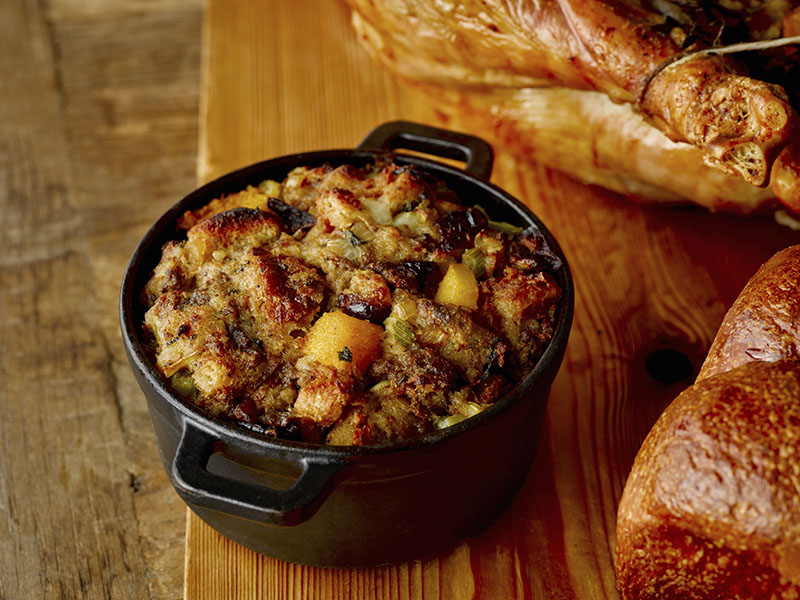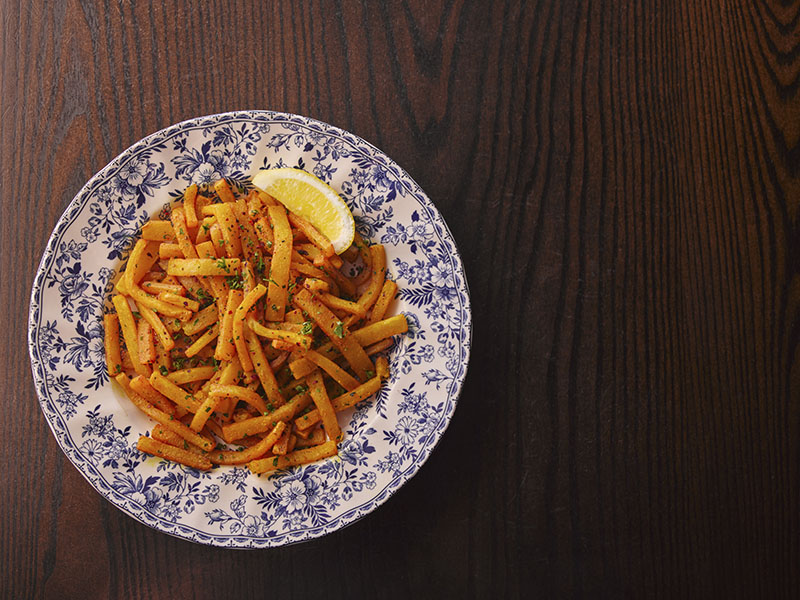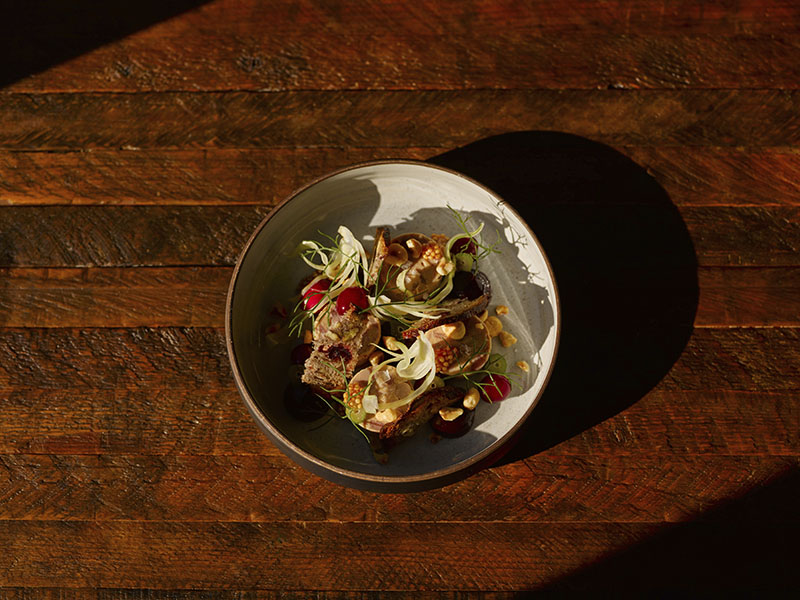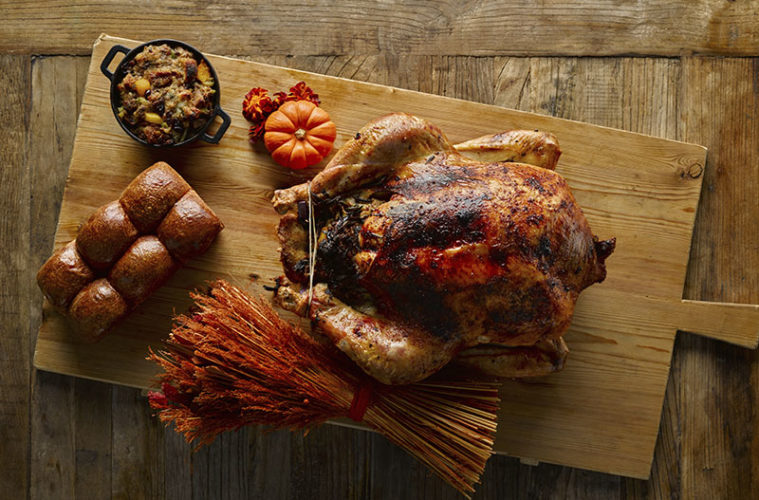Thanksgiving is a holiday that runs deep with tradition. We asked three of the North Shore's most notable chefs to share the (often flavorful) ways the holiday has resonated through the years for them.
Frank McClelland, FRANK
“I grew up in New Hampshire on my grandparents’ farm,” says Frank McClelland, culinary director, farm liaison, and CEO of Beverly’s Frank. Thanksgiving at his house, McClelland says, was a robust affair, and one that combined food, family, and a connection to the land on which they lived. “My favorite memory is helping prepare the house for guests,” he says. “The food always took center stage. Everything was from our farm.”
These days, McClelland spends Thanksgiving Day at the restaurant (this year, the restaurant will offer a multicourse menu for take out, which includes slow-roasted turkey, truffle-Madeira gravy, fennel sausage and apple brioche stuffing, cranberry-orange relish, cornbread with honey butter, a garden salad, a choice of three sides, one dessert, and bread for the next morning). The day after, he says, the real holiday now begins, the cheekily titled “Franksgiving,” held on what the rest of the world knows as Black Friday. “My wife and I cook my grandmother’s menu, our kids pitch in, set the table, decorate, and help with the food prep,” he says. “It’s a holiday affair.”

Some of the dishes that were most beloved in McClelland’s house growing up—scallop pie, served as an hors d’oeuvre; quince and winter squash bisque; and apple and cabbage stew—have survived the test of time. The provenance of those dishes, McClelland says, was his grandmother, but he has made sure to embrace the tradition of the family table, even as he makes new culinary traditions. “I work hard to bring the past alive in the present through these dishes,” he says. “This has helped me pass the cherished sensibilities of pleasure on to my loved ones.”
And there’s certainly no dearth of luxury at the McClelland family table, where, he says, Thanksgiving includes oysters on the half shell, cheese, pâté, candied sweet potatoes, velvet potatoes, sunchoke bay scallop soup, and multiple pies. (His favorites, however, remain the chestnut-sausage-brioche stuffing, and the brined turkey stuffed with sage, both of which are reflected in his restaurant’s holiday menu.)
Daniel J. Gursha, Ledger
For chef Daniel J. Gursha, executive chef of Salem’s Ledger, Thanksgiving is a holiday spent away from the restaurant. “We actually shut the restaurant for Thanksgiving,” he says. “It’s the one holiday that I feel most people are celebrating.” Gursha does prepare to-go turkeys for guests ahead of time—between 60 and 70, he says—but on the actual holiday, he has time to reflect on the foods he enjoyed most during his Massachusetts childhood.
“My grandmother was actually born in Egypt,” he says of his maternal grandmother, who often prepared the family meal growing up. As a result, he says, she made Egyptian dishes that he now associates with the holidays, like braised Swiss chard with split peas, and lemony potatoes with turmeric. “It was a lot of untraditional Thanksgiving food mixed with some of the traditional sides. I never really remember having mashed potatoes,” he says.

The flavors that he was exposed to in childhood, Gursha says, now influence both his cooking and his feelings about the holidays. “A lot of their food influence is all over the Mediterranean,” he says of his Egyptian-born mother and grandmother. “It’s Spanish, it’s Italian, it’s French, mixed with some Middle-Eastern spices.” The result, he says, was a holiday dinner—and, in fact, a culinary upbringing—that created a dynamic background of flavors. It’s why Swiss chard, and not mashed potatoes, is a comfort food for him.
The turkey, Gursha confesses, is the least interesting part of Thanksgiving, although he concedes that he does love the idea of leftovers. “If we had leftovers from Thanksgiving, we’d probably do something like a turkey poutine, with French fries, some turkey leg meat, some gravy,” he says. “That would be an awesome leftover Thanksgiving dish. I would eat that all day.”
Michael Sherman, Elm Square Oyster Co.
Leftovers aside, some chefs are in it for the main event. That’s true for Michael Sherman, executive chef at Andover’s Elm Square Oyster Co., who counts among his preferred sides his mother’s stuffing. Sherman, who grew up in a large family in Merrimac, often enjoyed Thanksgiving out to dinner, at places like the Danversport Yacht Club, but his mother always cooked a small holiday meal as well. “She would do a really great sausage stuffing,” Sherman says. “And that was something that I really liked, with the turkey drippings.”

Sherman, who keeps Elm Square Oyster Co. closed on all major holidays, now incorporates his mother’s stuffing into various restaurant dishes, he says. “I’ve done chicken dishes with the sausage stuffing, but I’ve changed it to chicken sausage stuffing,” he says of his family’s dish. Sherman also leans into other seasonal foods, like cranberries, which he incorporates into dishes during the holidays. This year, he plans to make a November charcuterie platter, featuring a turkey terrine, an upmarket reflection of Thanksgiving and all its comfort-laden flavors.
At home, Sherman is also prone to experimentation. “I deboned a whole turkey and rolled it up and sous-vided it one year,” he says. “I wrapped it all in caul fat, and I roasted it afterwards.” His father-in-law, Sherman says, is onboard with nontraditional Thanksgiving preparations, from parsnip panna cotta to a bird that looks less like a roast and more like a roulade. But for Sherman, part of the fun is combining traditional dishes like his mother’s stuffing with what he describes as “avant-garde” dishes—limit-pushing culinary inventions that still embrace the flavors of Thanksgiving.
He may never make the dessert that he looked forward to each year at the Danversport Yacht Club: a cream puff somehow formed in the shape of a swan. Still, he can look back on it fondly, because Thanksgiving, for chefs and average eaters alike, is a holiday of loving not only the ones you’re with, but also the plates that happen to be in front of you.

